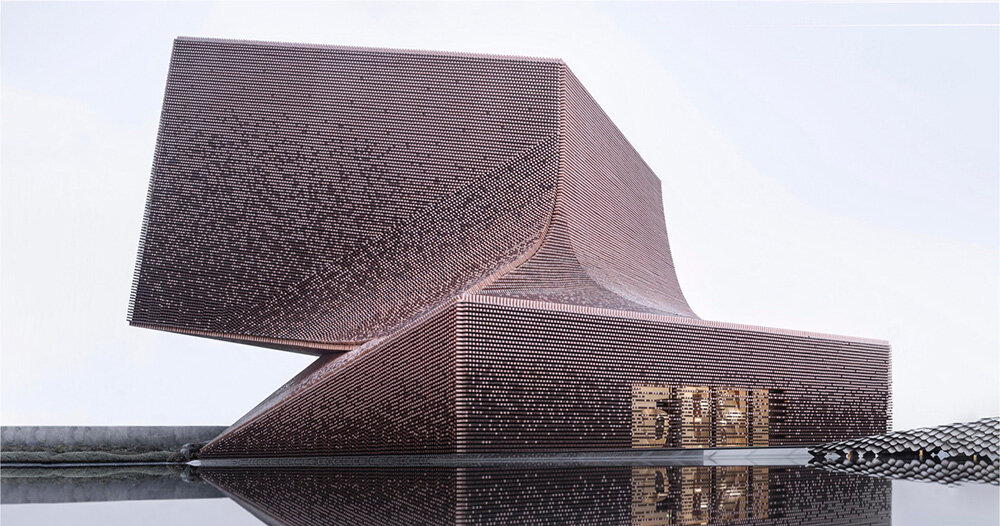sculptural architecture for old nanjing
AZL Architects recently completed the Jinling Art Museum, a project commissioned by China Overseas Real Estate for its Nanjing Jiangnan Jiuxu project. The design challenge was great, because the architects had to create a space that not only serves as a work of art, museum but also embodies the rich urban history and cultural traditions of Nanjing. The theme of “Jinling Renaissance under the Wutong Tree” guided the project with the aim of reflecting Nanjing’s deep historical context and creating a contemporary design language with its complex Masonry.
Nanjing, historically known as Jinling, is one of China’s oldest and most culturally significant cities. With a civilizational history spanning over 7,000 years, the city has played a pivotal role in Chinese history and has been the capital of several dynasties. The city’s history is closely tied to the preservation of Han culture, especially during the period of southern migration. The Jinling Art Museum aims to honor this heritage while also depicting the city’s ongoing development.
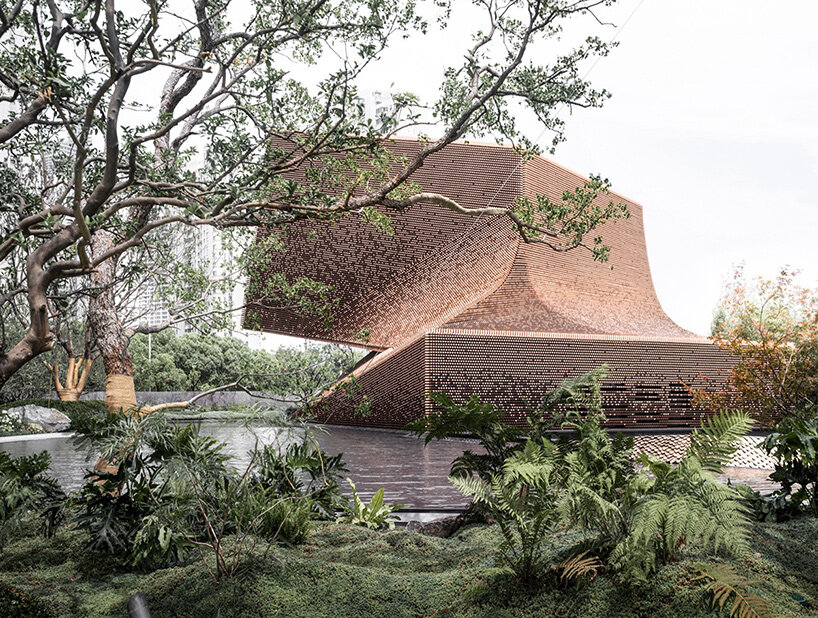
Photos © Hou Bowen
a ceramic tile façade envelops the Jinling Art Museum
The team AZL Architects designs its Jinling Art Museum as a cluster of two rotated blocks connected by surfaces that create a striking twist. The base of the structure is aligned with the nearby residential high-rises, while the upper part is rotated parallel to the adjacent street. This rotated design, different from typical mathematical or spiral shapes, symbolizes the dynamic upward growth of the structure and resonates with the idea of vitality and historical significance of the “mausoleum” in Nanjing. The interplay between the rotated diamond volume and the square base creates a rich spatial experience inside and out.
A central element of the museum’s design is its façade, which is clad in 139,000 custom-made ceramic tiles. These tiles, each measuring 60 x 60 x 180mm, were chosen to reflect Nanjing’s 3,100-year history and the importance of its ancient city walls. The ceramic tiles are inspired by a late Eastern Jin dynasty brick currently on display at the Nanjing Museum. While all of the tiles have the same dimensions, they vary in texture and are both glazed and unglazed, adding depth and visual appeal to the façade.
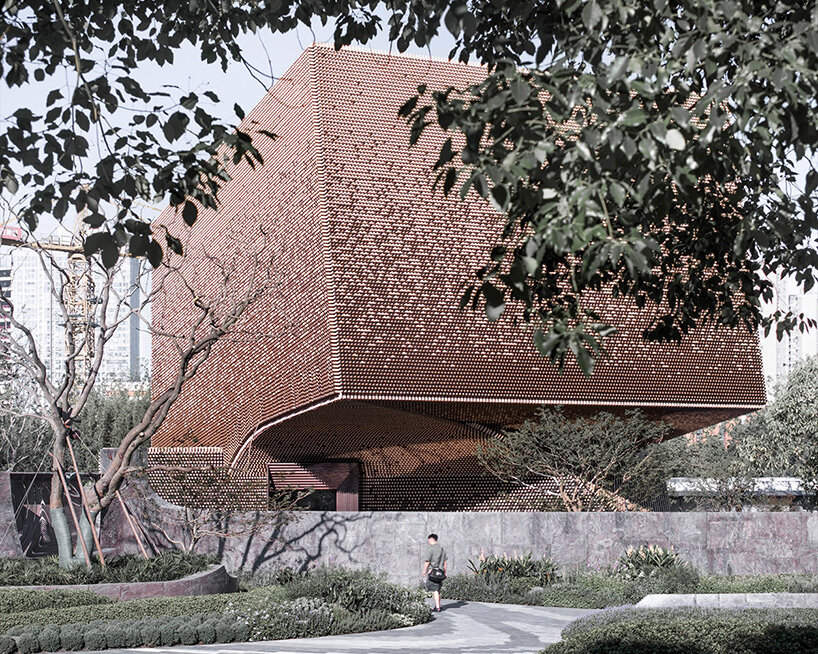
The Jinling Art Museum by AZL Architects reflects the deep historical and cultural significance of Nanjing
Innovative curtain wall construction by azl architects
The ceramic tile facade required innovative construction techniques. Two methods were used to attach the tiles: a “mounted U-shaped slotted through bolt fixing” for the curved surface above the main entrance and a more conventional “mounted chemical anchor fixing” for other areas. These methods ensured both safety and combined traditional craftsmanship with modern technology. Special tools were developed to precisely drill holes and grooves into the tiles to accommodate the complex transitions between flat and curved surfaces.
The design of the ceramic tile curtain wall was based on a modular approach that allowed for on-site assembly while maintaining the precision required for the complex facade. The unit modules, each approximately 1.2 meters long, consist of a horizontal row of ceramic tiles mounted on a linear steel keel. This modular approach simplified the construction of both flat and curved surfaces and enabled the creation of a seamless three-dimensional facade.
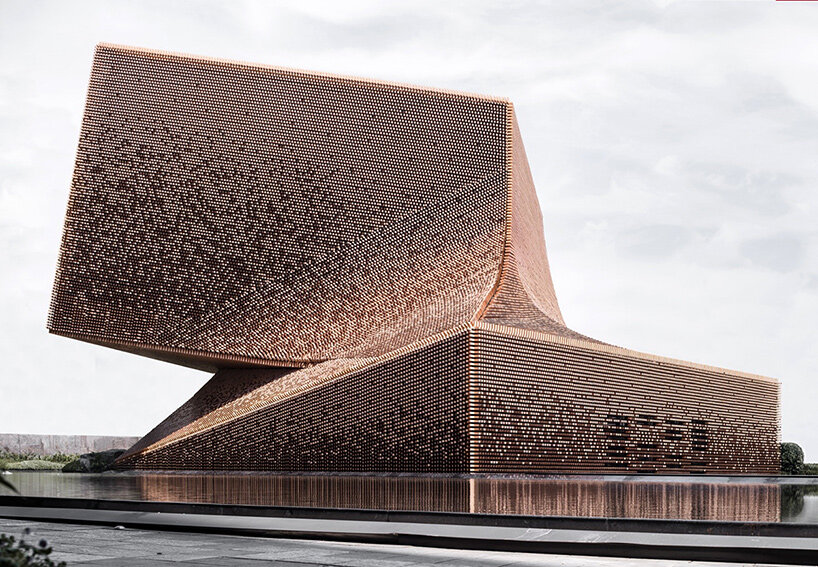
rotated blocks are connected by surfaces that create a dynamic rotational movement
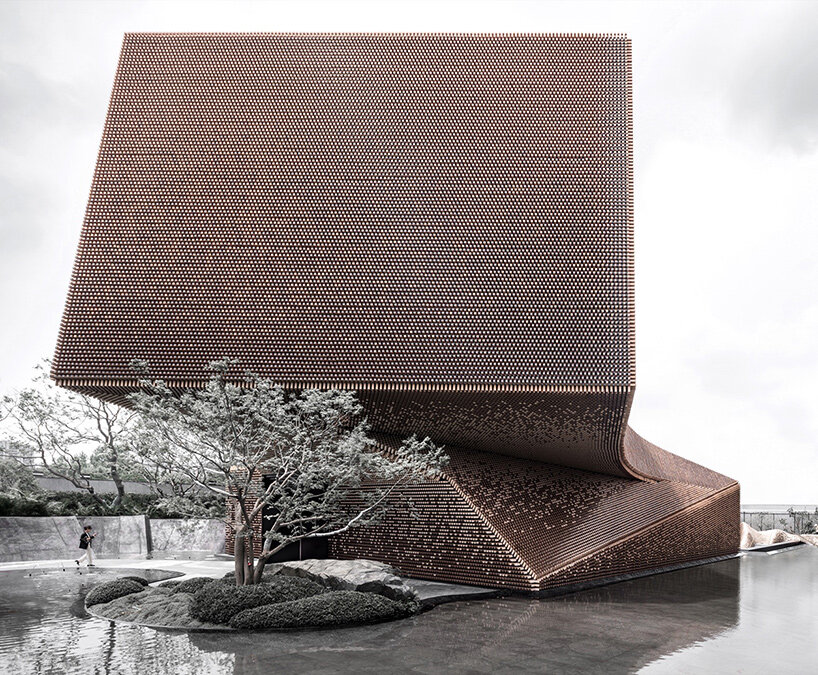
The winding design symbolizes upward growth and vitality and reflects Nanjing’s heritage.
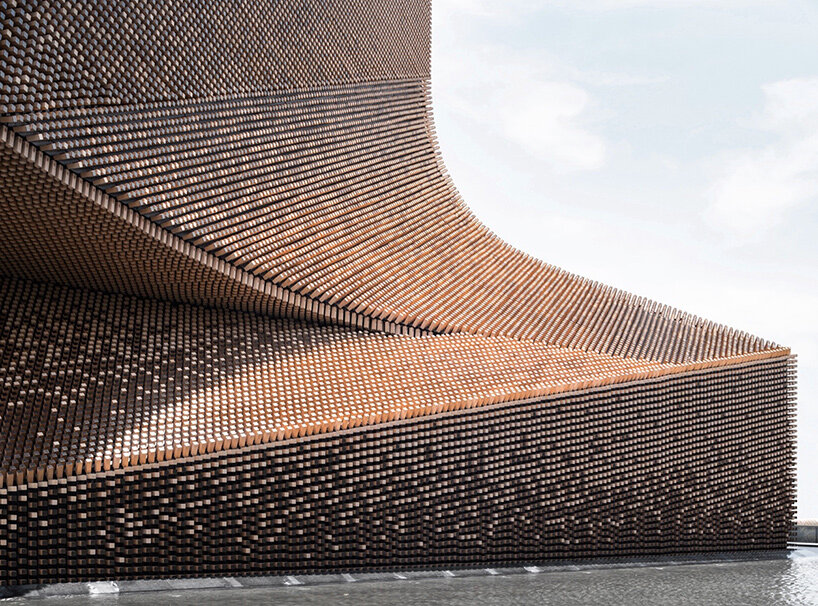
139,000 custom-made ceramic tiles cover the façade, inspired by Nanjing’s old city walls

